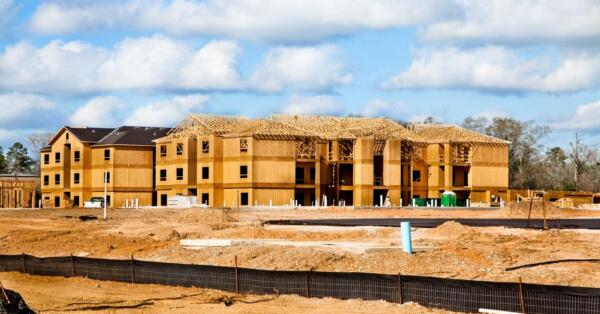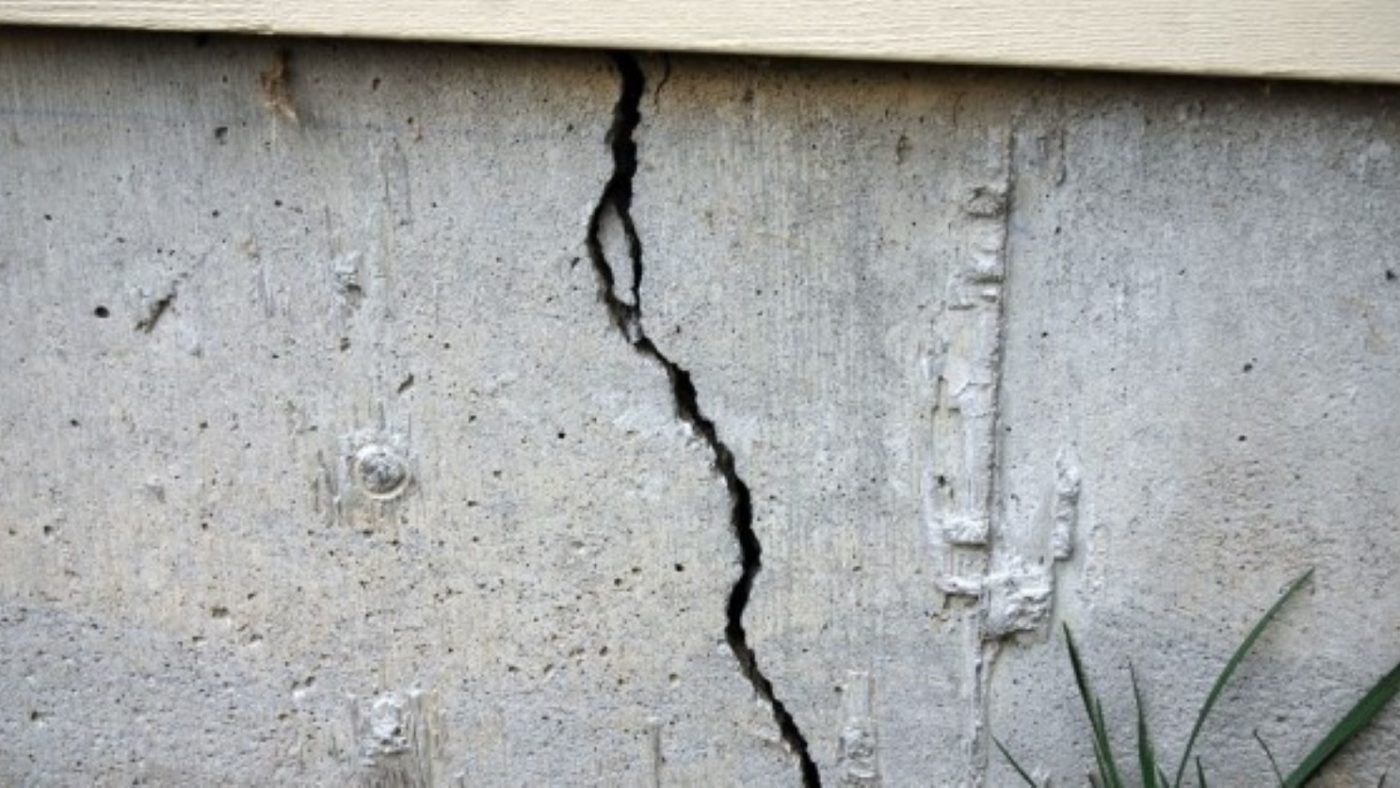Have you noticed cracks in your interior walls or sticking doors and/or windows? If you have, your house may be a victim of settlement.
What is Settlement?
Settlement is the downward movement of the ground (soil) when a load is applied to it. The load increases the vertical effective stress exerted onto the soil. This stress, in turn, increases the vertical strain in the soil. This increase in vertical strain causes the ground to move downward. In fact, most buildings settle over time. However, most building settlement occurs during the first few years after construction, unless there are changes in the drainage patterns around the building, severe changes in weather, or other external factors. Ongoing building settlement is uncommon.
Types of Building Settlement
Uniform Settlement
During uniform settlement, the entire foundation settles at a constant rate. Usually, there is no, or very minor, cracking during uniform settlement.
Differential Settlement
Differential settlement commonly occurs as a result of the non-uniform movement of the underlying soils (soil settlement at different rates). This type of settlement can result in cracking to the foundation, exterior cladding, and interior finishes. Additionally, with a pier and beam foundation system, each individual pier may settle at a different rate, which is different than the settlement that would occur to a slab foundation.
What Causes Settlement of Soils?
Settlement occurs from soil consolidation due to a reduction in voids or spaces between soil particles due to applied loads or changes in moisture content. The loss of moisture in soils causes consolidation. As the moisture takes up volume in the soil, and when the moisture is expelled, the soil loses volume and consolidates. In the opposite circumstance, when there is a buildup of moisture in the soils, smaller clays and silts, which were previously used to fill the voids between larger soil types and provide additional structural support, will drain downwards in the ground when the moisture eventually subsides. This will cause the supporting soil to lose its load-bearing capabilities.
Typical Causes of Settlement
- Weak bearing soils
- Addition to an existing house
- Improperly backfilled soils / poor compaction
- Irregular rainfall or drought
- Poor drainage around the house
- Changes in the groundwater table
- Mature trees growing close to the house
- Seepage from a plumbing leak or swimming pool
- Pumping of oil or water out of the nearby ground
How do you know if your house has experienced settlement?
The most common evidence that settlement has occurred is:
Exterior Cracking
Usually indicated by vertical cracks in poured foundations, or stair-step cracking in brick or CMU walls. The cracks on exterior walls usually originate from the ground. Larger cracks generally indicate ongoing settlement.
Interior Cracking
Usually indicated by semi-horizontal or 45-degree angle cracks. Cracks are typically found at the corners of windows at doors, where the building has the most stress and is usually due to the foundation shifting. These cracks can also form from heaving, which is the upward movement of soil, the opposite of settlement.
Sagging Floors
Sagging floors generally occur when a house was built with a pier and beam foundation system. The individual piers will settle at different rates, resulting in the floors that sag at the location of the settled pier.
Sticking Windows and Doors
Windows and doors that are hard to open or stick may be a sign of settlement. Check for scrape marks on the floor or the door jamb, or a misaligned latch, which are signs that settlement may have occurred.
How Do You Repair and/or Stop Settlement?
Helical Piers
Helical piers are typically used to jack up spread footings. The piers are typically spaced approximately every five feet and are driven in the ground until sound soil or bedrock is reached.
Slab Leveling
Slabs that have settled can be leveled by the use of mudjacking or polyurethane foam. Mudjacking is the use of flowable concrete or grout and polyurethane foam is a closed cell foam. In both uses, holes are drilled in the settled slab and the flowable fill is pumped through. The pressure exerted through the pumping process raises the slab as well as consolidating the soil to prevent future settlement. Polyurethane foam is typically more expensive than mudjacking; however, it is typically stronger, has a longer life span, will not retain moisture, and the slab can be utilized sooner.
Pier and Beam
If your house is on a pier and beam system that has settled, the piers will need to be leveled. This will effectively lift the sagging floors as well. To accomplish this, the use of hydraulic jacks, sitting on a strong foundation, will be needed to lift the house around the settled pier. Metal shims can then be placed between the pier and the beam.
To learn more about VERTEX’s Forensic Engineering services or to speak with an Engineering Expert, call 888.298.5162 or submit an inquiry.
Author: C. Doug Day, P.E.





